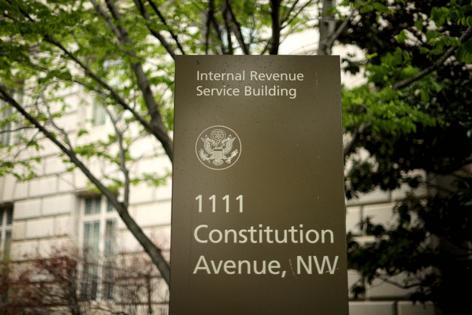Commentary: The IRS shows what government efficiency really looks like
Published in Op Eds
Between all the talk of fiscal commissions and efficiency agencies, it seems like the question of the day is how to make the U.S. government operate more proficiently. There is no shortage of ideas on what should be cut and by how much. Before any actions are taken, officials should take a look at a recent research paper published by a set of economists in the Quarterly Journal of Economics, the profession’s most esteemed journal, that provides a case study in effectiveness.
The study is an accounting of the cost of in-person audits carried out by the Internal Revenue Service relative to the taxes paid as the result of the audits. These in-person audits, in contrast to “correspondence audits” in which the IRS asks for information via letter, can be labor-intensive and expensive to administer. The researchers found in-person audits take just under 30 hours of labor on average and cost the agency $5,900. The returns are more than double, however, at $14,200, suggesting that for every dollar spent on audits, $2.17 comes back via tax collected.
But that’s just the average, and it’s misleading for two reasons.
First, that average didn’t hold across the spectrum of income distribution. In-person audits of filers in the bottom 50% of income were simpler but netted less in taxes collected than the cost to administer at 96 cents on the dollar. Audits for the top 0.1% were much more complex but also much more remunerative, pushing the return to $6.29 on the dollar.
Second, the average doesn’t consider the effect on tax collection in the years following an audit. When examining the tax returns of households that had been audited, tax receipts were higher in the following 14 years for which they have data. In a year, the post-audit deterrence effect was about 30% of the size of the taxes claimed by the audit but accumulates into more than three times the additional taxes collected.
One conclusion would be to simply push for more audits of the highest income filers. But the real takeaway is realizing that the goal of an audit isn’t just to collect taxes owed but to encourage better tax behavior. In that sense, the audit is just the start of bigger payoff that will pay dividends many years into the future. The IRS estimates that the tax gap, the difference between taxes owed and taxes collected, was $606 billion in 2022, the most recent year of data. That’s enough to fund free and universal child care and preschool for all children, provide all school meals, and stand up a paid leave program — four times over. (1)
From here, there’s bad news and good news.
The bad news is that an efficient IRS has never really been a Republican goal. The party has long held the IRS in some sort of contempt, dating back to the Roth hearings of the late 1990s, during which the agency was investigated for carrying out “raids” on small businesses that the Republicans called “Gestapo-like.” The hearing was used to push through a massive reform of the IRS that included a cut to audit funding.
And when Republicans gained a majority in the House in 2011, they quickly cut IRS funding. That led to a further reduction in audits and ushered in a decade of diminished funding until the Inflation Reduction Act of 2022 provided $80 billion to the agency to modernize and beef up enforcement (of which $20 billion was clawed back by Republicans).
If the Quarterly Journal of Economics research paper offers a playbook of how to be effective, it’s unlikely Republicans, who now control the White House, Senate and House of Representatives, will do anything but throw it in the trash.
The good news is that the core of the paper’s findings won’t change. Ignoring it for four years won’t make it any less true. And that core is much bigger than the IRS and audits; it’s a simple but powerful lesson in government effectiveness, one that was probably obvious to some but now has very good evidence demonstrating that enforcing a standard sets the standard.
What’s clear from the findings is the need to support enforcement across many government agencies, from the Wage and Hour Division of the Department of Labor to the Environmental Protection Agency, and others. Republicans might not like the answer, but the way to make the government more effective is no mystery — just fund it adequately so it can effectively do its job.
____
(1) Only one of these programs, paid leave, has been estimated by the CBO. Making the child care and preschool provisions of Build Back Better and school meals universal would at most double their costs, resulting in $100 billion to $140 billion per year.
____
This column does not necessarily reflect the opinion of the editorial board or Bloomberg LP and its owners.
Kathryn Anne Edwards is a labor economist and independent policy consultant.
©2024 Bloomberg L.P. Visit bloomberg.com/opinion. Distributed by Tribune Content Agency, LLC.




























































Comments